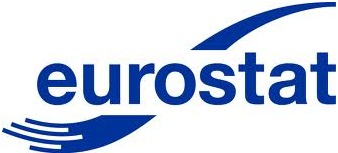In the first quarter of 2012, compared with the fourth quarter of 2011, the business investment rate remained nearly stable in the euro area and fell slightly in the EU27.
In the euro area, the business profit share rose slightly, as wage costs remained stable while value added increased slightly.
These data come from a detailed set of seasonally adjusted quarterly European sector accounts released by Eurostat, the statistical office of the European Union and the European Central Bank (ECB).
Business investment rate down in the EU27, almost stable in the euro area
In the first quarter of 2012, the gross investment rate of non-financial corporations was 19.9% in the EU27, compared with 20.1% in the fourth quarter of 2011.
In the euro area, the investment rate was 20.6% in the first quarter of 2012, compared with 20.7% in the previous quarter, as investment decreased (-0.6%) while gross value added recorded a moderate increase (+0.2%). Total stocks (materials, supplies and finished goods) fell slightly for the second quarter in a row.
Business profit share up in the EU27, almost stable in the euro area
In the EU27, the gross profit share of non-financial corporations was 38.1% in the first quarter of 2012, compared
with 37.8% in the fourth quarter of 2011.
In the euro area, the profit share was 38.3% in the first quarter of 2012 compared with 38.2% in the previous quarter, due to compensation of employees (wages and social contributions) plus taxes less subsidies on production remaining stable while value added rose (+0.2%).
Nominal growth of components of the investment rate and the profit share (euro area)
Seasonal adjustment has been performed using the Tramo-Seats method. The seasonally adjusted series are built up indirectly as the sum of seasonally adjusted components.
Institutional sectors bring together economic units with broadly similar characteristics and behaviour, namely: households (including non-profit institutions serving households), non-financial corporations, financial corporations, government and the rest of the world.
The gross investment rate of non-financial corporations is defined as gross fixed capital formation divided by gross value added. This ratio relates the investment of non-financial businesses in fixed assets (buildings, machinery etc.) to the value added created during the production process.
The European Union (EU27) consists of 27 Member States: Belgium, Bulgaria, the Czech Republic, Denmark, Germany, Estonia, Ireland, Greece, Spain, France, Italy, Cyprus, Latvia, Lithuania, Luxembourg, Hungary, Malta, the Netherlands, Austria, Poland, Portugal, Romania, Slovenia, Slovakia, Finland, Sweden and the United Kingdom plus the European Central Bank and the EU institutions.
The euro area (EA17) consists of 17 Member States: Belgium, Germany, Estonia, Ireland, Greece, Spain, France, Italy, Cyprus, Luxembourg, Malta, the Netherlands, Austria, Portugal, Slovenia, Slovakia and Finland plus the European Central Bank.
The profit share of non-financial corporations is defined as gross operating surplus divided by gross value added. This profitability-type indicator shows the share of the value added created during the production process remunerating capital. It is the complement of the share of wage costs (plus taxes less subsidies on production) in value added.
Methodological information
The compilation of the European sector accounts follows the European System of Accounts (ESA 95) and covers the period from the first quarter of 1999 to the first quarter of 2012. The European sector accounts are not a simple sum of the data of individual countries. There are six specific compilation steps: (1) conversion to euro, (2) estimation of missing countries, (3) incorporation of the European institutions, (4) estimation of the flows between the euro area / EU and third countries, (5) balancing of the accounts and (6) seasonal adjustment of key series.
Due to the conversion to euro, the growth rates of EU aggregates may be affected by movements in exchange rates and should be viewed with caution. For this reason, nominal growth rates are provided for the euro area only. However, there is hardly any impact on ratios such as the investment rate and the profit share.
The rest of the world accounts, as compiled by Member States, record transactions between the national economy and all non-resident units, including those in other EU Member States. To measure the external transactions of the euro area / EU, it is necessary to remove cross-border flows within the area concerned. Imbalances between intra-imports and intra-exports, called “asymmetries”, are then eliminated. Currently, intra-flows and resulting asymmetries are not removed in the other domains of national accounts of Eurostat. Therefore, European sector accounts are internally consistent but have discrepancies with other national accounts data.
For detailed data and methodology, please see Eurostat’s website at:http://ec.europa.eu/eurostat/sectoraccountsand ECB’s website at:http://www.ecb.eu/stats/acc/html/index.en.html.
Release and revision policy
The quarterly news releases are published four months after each quarter. The next release will take place on 30 October 2012.
The whole time series are revised every quarter. Compared with News Release 66/2012 of 30 April 2012, the business investment rate for the fourth quarter of 2011 remains
unchanged at 20.7% in the euro area and has been revised from 20.2% to 20.1% in the EU27. The business profit share has been revised from 38.1% to 38.2% in the euro area and from 37.7% to 37.8% in the EU27.
The ECB and Eurostat publish integrated non-financial and financial accounts, including financial balance sheets, for the euro area. Eurostat also publishes the non-financial accounts of the European Union.
Eurostat’s website includes detailed annual sector accounts by country and derived key indicators, which also include the indicators that combine non-financial and financial accounts such as additional profitability indicators.
The full set of quarterly sector accounts is published for euro area / EU27 aggregates only. However, a subset of quarterly key indicators is published 105 days after each quarter at http://ec.europa.eu/eurostat/sectoraccounts (see “Quarterly data”) for 15 out of the 18 members of the European Economic Area (EEA) whose GDP is above 1% of the EU27 total. The other 12 EEA members, whose GDP is below 1% of the EU27 total, do not have to transmit the quarterly accounts of corporations to Eurostat.

